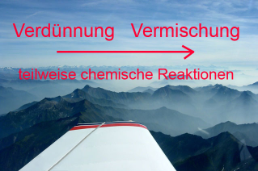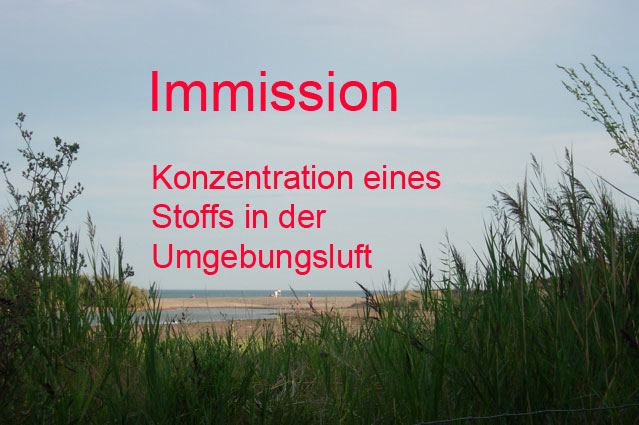Emissions are substances released by a source, such as an aircraft engine. These substances are well mixed into the atmosphere. Immissions, on the other hand, are the concentration of substances in the atmosphere measured at a particular measuring station.
Emissionen

Emissions are released from aircraft engines when kerosene is burned. They are measured in kilograms or tonnes.

Some of the emitted substances remain in the form in which they come out of the exhaust system, including carbon dioxide (CO2). These substances are diluted, mixed and transported.
Other substances released from combustion engines (such as cars, heavy goods vehicles, ships and aircraft) undergo chemical change, either during or after emission. They can also react with other substances in the atmosphere and can sometimes form harmful substances. Weather has a major impact (sunshine or rain, stable or unstable weather conditions and wind). One example of such a harmful substance is ground-level ozone, which does not come directly from the exhaust emissions of combustion engines, but is produced when pollutants from combustion engines undergo a chemical reaction with substances in the atmosphere with the help of sunlight.
Some chemical conversion processes depend on the altitude at which emissions are released. For example, the greenhouse gas methane is degraded by NOx emissions only at higher altitudes.
In addition to direct aircraft emissions, ground-level emissions also reach higher altitudes. For example, this occurs due to air currents produced by storms circulating the air up to the tropopause (8 to 16 kilometres above sea level).

Immissions

Immissions are the concentration of substances in the atmosphere recorded at a measuring station (usually at ground level). Switzerland’s Air Pollution Control Ordinance (OAPC) sets out immission limits. These should not be exceeded.
In most cases, immissions are also reduced by cutting emissions. However, there is not generally a sharp rise or fall in immissions immediately after emissions are reduced or increased.
Immissions, which are measured in the atmosphere, are the result of emissions from all sources. Long-lasting gas particles from different sources mix evenly up to high altitude. For example, it does not make any difference in terms of climate impact whether the greenhouse gas CO2 is emitted at ground level by a heating system or at altitude by an aircraft.
Further Information








